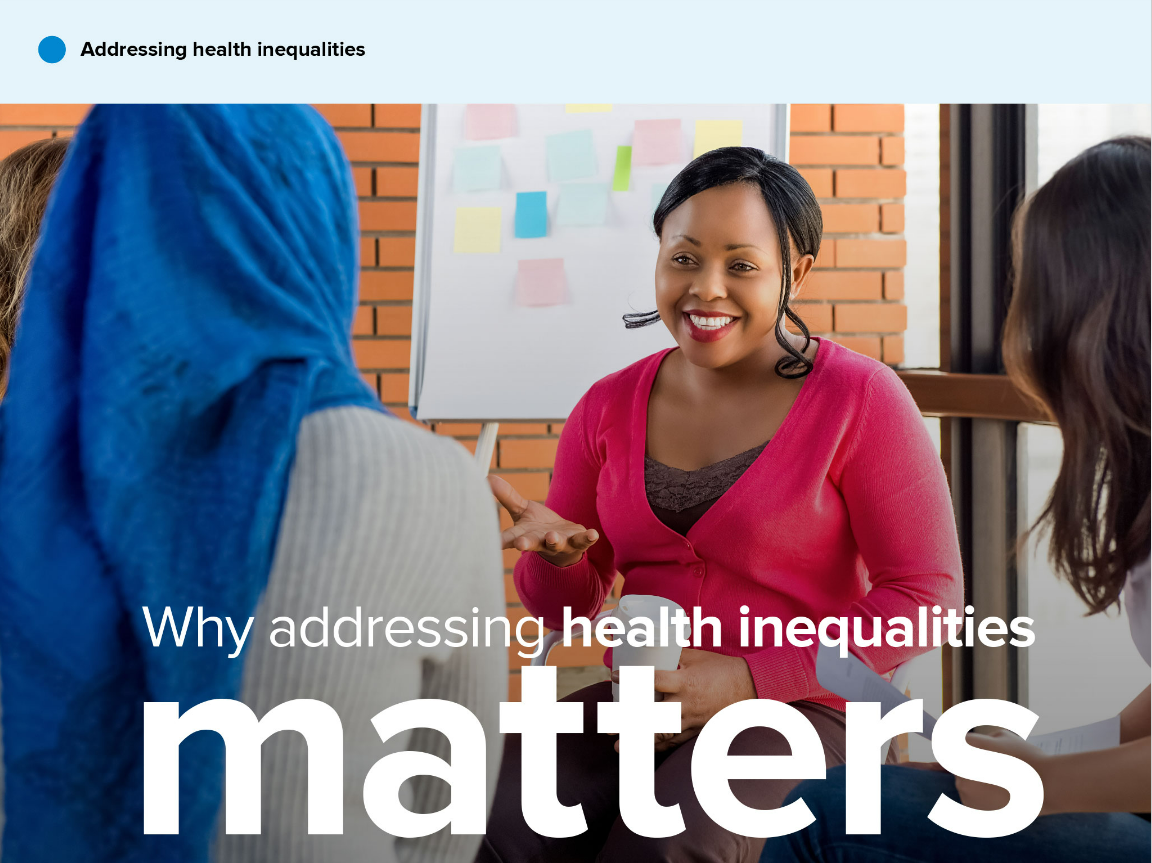How learning about cultures can address health inequalities in maternity services
Black women are more likely than white women to die in pregnancy or childbirth1. Women from Asian ethnic backgrounds face a twofold risk, and women living in the most deprived areas of the UK are almost three times more likely to die than those in the most affluent areas2.
These inequalities are unacceptable. The Eastern Patient Safety Collaborative is delivering the Maternity and Neonatal Safety Improvement Programme (MatNeoSIP), working with all maternity and neonatal providers in our region on a range of key improvement workstreams aimed at reducing the rate of stillbirths, neonatal death and brain injuries. Two of the key enablers underpinning this work are addressing health inequalities and considering the safety culture of the organisation.
As quality improvement professionals it’s vital that we understand the causes of inequalities and instil a culture of curiosity about how our assumptions, processes and services affect people from different cultures differently. But this is easier said than done. So often people are interested in making improvements and addressing disparities within systems but don’t feel they have the knowledge or experience to act and bring about change. This is why a patient safety focussed culture which empowers staff is key in addressing health inequalities.
Back in 1871, Edward Tylor, an anthropologist, described culture as an umbrella term which encompasses the social behaviour and norms found in human societies, as well as the knowledge, beliefs, arts, laws, customs, capabilities, and habits of the individuals in these groups3. We talk about cultures within organisations and providers and how this can impact care, but understanding our own culture is only one side of the equation. To truly provide excellent care to all groups within society we need to understand nuances in cultures within our patient populations by asking two questions:
- What more can we learn from this community?
- What do they want us to know?
Engaging communities for better understanding
In 2021, as part of NHS England and NHS Improvement’s drive to address health inequalities, the East of England Regional Maternity and Clinical Network supported the delivery of a series of cultural awareness workshops in partnership with the East of England Local Government Association.
These workshops delivered to healthcare professionals and patient representatives across maternity and neonatal services and were led by facilitators representing their communities; Roma, LGBTQ+, African, Orthodox Jewish, Gypsy and Traveller, Muslim and Asian, Eastern European as well as asylum-seekers and refugees. The focus was to understands not just what healthcare professionals wanted to learn, but also what these community groups wanted us to learn to understand them better. We did this to ensure that when we talked about culture, we were engaging the people from those communities and learning from their experiences in their own words.
What did we learn?
We recently published a report summarising the impact of these workshops and what they taught us about addressing the health inequalities faced by mothers and birthing people accessing maternity and neonatal services, with a view to improving mortality rates and health outcomes.
The report – Equality in Heath – Embedding Cultural Awareness in Maternity and Neonatal Care (Phase one Report) – is available for download now.
It highlights some of the inequalities ethnic minorities and seldom heard women or birthing people face within our health services, including:
- Illiteracy or lack of interpretation services
- Inability to access information due to lack of digital capabilities or restriction or lack of engagement from gatekeepers within the community
- Previous negative healthcare experience as individuals or groups
So, what can we do to break these barriers? It’s simple yet difficult. The first step is spreading awareness and knowledge. We need to listen and take proactive action based on what we have learned from the communities we have engaged and keep an open dialogue to keep learning through the next phase of this work. We should broaden the access to cultural awareness/intelligence/competences training and workshops. This will start addressing some of those unconscious biases towards ethnic groups, countries, cultures, and customs. We need to ensure our homes and work environments are comfortable and safe places to discuss issues about race, racism, discrimination and the part we can all play to make meaningful changes as a member of the community or as an ally.
Secondly, we need to turn this education into actions and outputs. I hope the recommendations will empower individuals within systems to take action. An individual’s culture can determine their preferred birthing position, their choice of clothing or who is with them during childbirth. Just having a plan for such cases is a simple but effective action you can take. Services should formulate their own action plans based on the findings of our report whilst ensuring there is representation in patient and public involvement plans to regularly check for learning opportunities and further improvements can be made.
What can you do?
If you want to learn more about this programme or our work in delivering the Maternity and Neonatal Safety Improvement Programme (MatNeoSIP), get in touch.
You can also download the report now.
What are NatPatSIPs?
The National Patient Safety Improvement Programmes (NatPatSIPs) support a culture of safety, continuous learning and sustainable improvement across the healthcare system. They are run by the Patient Safety Collaboratives (PSCs), which are funded and nationally coordinated by NHS England and NHS Improvement and hosted locally by the s (AHSNs).
About the author

Tendai is the Maternity Clinical Improvement Lead at Health Innovation East.
You can follow her on twitter: @tendai_nzirawa.
You may also like…

Reducing health inequalities needs action to be taken to address all the factors that contribute to them. Harprit Hockley, Head of Equalities and Inclusion NHS England and Improvement, outlines how we are working with our communities to take positive action.
Share your idea
Do you have a great idea that could deliver meaningful change in the real world?
Get involved